Table of contents
Nebula Genomics DNA Report for PTSD
Is PTSD genetic? We created a DNA report based on a study that attempted to answer this question. Below you can see a SAMPLE DNA report. To get your personalized DNA report, purchase our Whole Genome Sequencing!
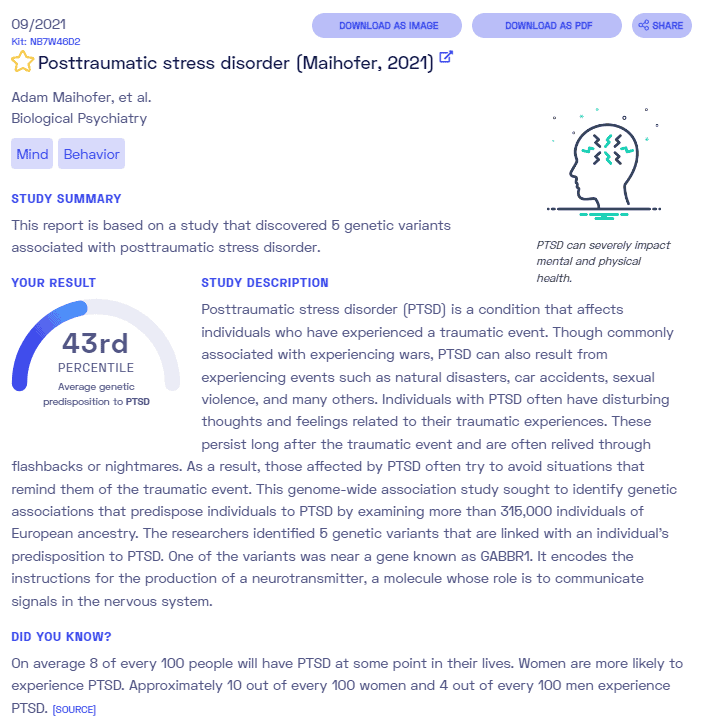
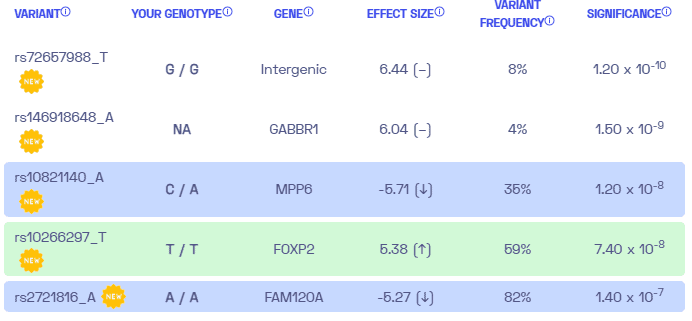
What is PTSD?
Post traumatic stress disorder (PTSD) is a mental health and behavioral disorder that affects those who have experienced a traumatic event or environment. These situations are extremely varied but may include warfare, sexual assault, interpersonal violence, and non-assault violence such as vehicle accidents and an unexpected death of a loved one. Prolonged trauma, including slavery and chronic domestic abuse, are especially damaging to one’s emotions and core identity, increasing the risk of PTSD.
Symptoms often manifest as disturbing thoughts, feelings, and dreams related to the event that lead to behavioral changes in a person’s life and daily functioning. Experiencing traumatic events over and over through PTSD often leads patients to try and avoid reminders of the events and/or react inappropriately (e.g. reacting towards a backfiring car as it triggers memory of war). It affects how a person thinks and feels and may present itself as a change in one’s personality.
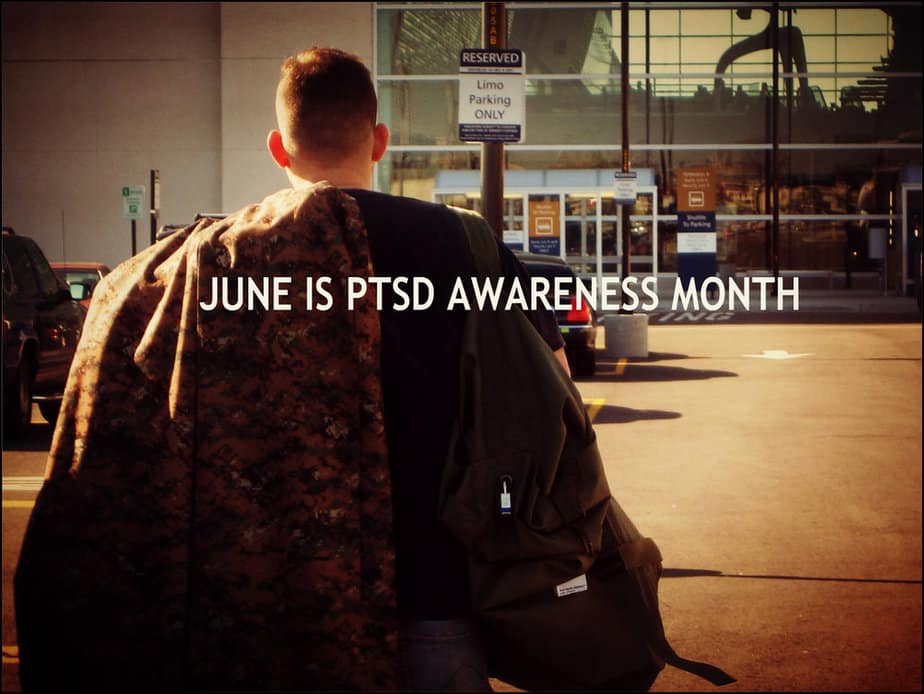
Military personnel and those living in a war zone are especially susceptible to PTSD due to the unique trauma common to combat environments. In addition to combat, armed forces personnel may experience military sexual trauma (MST). This is any sexual harassment or sexual assault that occurs while you are in the military. MST can happen to both men and women and can occur during peacetime, training, or war.
Counseling and medication are the two most common treatments for the condition. The former is most effective when used before or just after symptoms start. Medications prescribed are usually antidepressants. There are times when a combination of the two treatments is used.
Epidemiology
People develop PTSD at any age. Based on diagnostic interview data from National Comorbidity Survey Replication (NCS-R), the prevalence of PTSD among U.S. adults between 2001-2003 was 3.6% with a lifetime prevalence of 6.8%. It was found that females were at higher risk than males. Equal amounts of participants showed signs of mild, moderate, and severe forms of the disease.
The data also showed that an estimated 5.0% of adolescents had PTSD, and an estimated 1.5% had severe impairment. As with adults, females were at a higher risk than males.
The U.S. Department of Veterans Affairs tracks PTSD prevalence specific to veterans categorized by area:
- Operations Iraqi Freedom (OIF) and Enduring Freedom (OEF): Between 11-20% in a given year (wars in Iraq and Afghanistan)
- Gulf War (Desert Storm): About 12% in a given year
- Vietnam War: About 15% were currently diagnosed with PTSD at the time of the most recent study in the late 1980s, the National Vietnam Veterans Readjustment Study (NVVRS). It is estimated that about 30% of Vietnam Veterans have had PTSD in their lifetime
Out of the veterans that us VA healthcare, 23% of females reported sexual assualt while in the military. Furthermore, 55% of females and 38% of males have experienced sexual assault.
Symptoms
Symptoms of PTSD vary among individuals.
To be considered as a disorder individuals must experience symptoms longer than 1 month, have them severe enough to interfere with aspects of daily life, such as relationships or work, and the symptoms also must be unrelated to medication, substance use, or other illness.
The National Institute of Mental Health defines the 4 main symptoms:
- Re-experiencing
- Avoidance
- Arousal and reactivity
- Cognition and mood symptoms
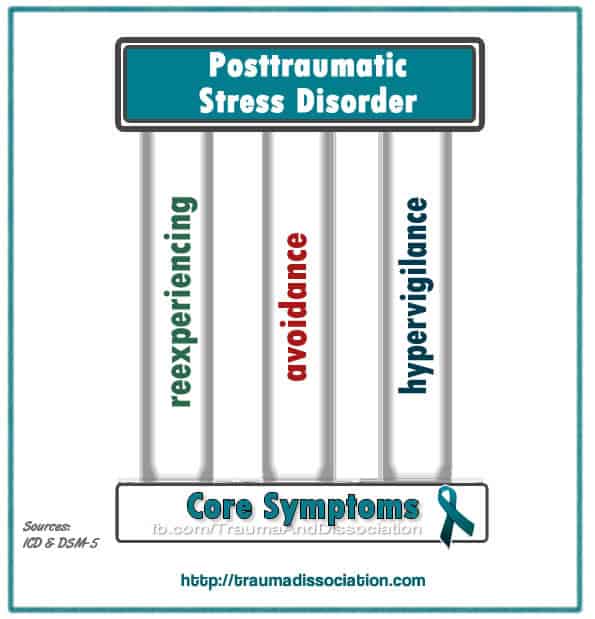
People with this condition often have co-occurring conditions, such as major depression, substance use, panic, or generalized anxiety disorders. Patients can also report feeling numb emotionally after an event.
Children and teens with PTSD may have different symptoms than adults. For those with childhood trauma under the age of 6, trauma can manifest itself as wetting the bed after having learned to use the toilet, losing the ability to talk, acting out scary events during playtime, and being clingy to a parent or other adult.
Older children and teens appear to have symptoms more similar to adults although they may also develop what appears to be disruptive or destructive behaviors.
People with PTSD are more prone to self-harm and suicide. Help is available using the National Suicide Prevention Lifeline: 800-273-8255.
Causes
PTSD is the result of having a traumatic experience. These situations can be associated with military service, war zones, domestic abuse, accidents, etc. Essentially, any dangerous or scary encounter has the chance to cause the disorder. Prolonged violence and interpersonal abuse play a role in especially serious development of the condition.
Types of events that can lead to PTSD include:
- serious accidents
- physical or sexual assault
- abuse, including childhood or domestic abuse
- exposure to traumatic events at work, including remote exposure
- serious health problems, such as being admitted to intensive care
- childbirth experiences, such as losing a baby
- war and conflict
- torture
- life threatening situations such as natural disasters
Note everyone who experiences PTSD after a traumatic event. However, there are several risk factors.
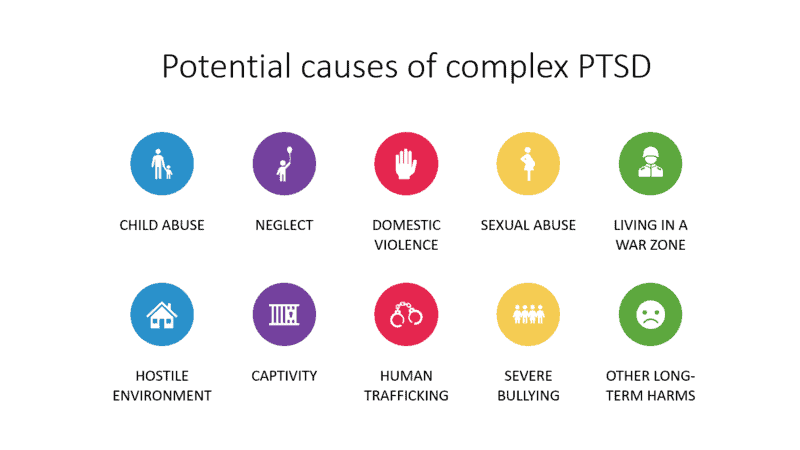
People who have a history of anxiety or depression are more likely to experience the condition after a traumatic event. Also, those with limited family and friend support are also at higher risk.
Biologically, several factors that occur when we feel stressed can bring on PTSD symptoms. One example is survival mechanism, often linked to hyperarousal during everyday things. This reaction is meant to keep the individual on guard and prepared for another emergency. However, it often ends up being a distraction when there is no danger.
Another biological response is heightened stress hormone levels. These are the chemicals released when the “fight or flight” reaction is activated. People with PTSD tend to have continued high levels, increasing hyperarousal.
Finally, doctors have noted changes in the brain in patients diagnosed with PTSD. This is especially apparent in the hippocampus, which is often smaller than in those without the condition. Changes in this part of the brain may be related to fear, memory problems and flashbacks, and anxiety, notably preventing them from being processed efficiently.
Is PTSD Genetic?
It is widely accepted that PTSD has a genetic influence, with 30% of cases being explained by shared genetics alone. Twin studies have demonstrated that identical twins have a higher risk of both being at higher risk than fraternal twins. Additionally, twins with a smaller hippocampus show signs of being more susceptible.
The condition is also linked to other mental illnesses. Therefore, those who have a personal or family history of conditions such as anxiety, depression, or using alcohol and drugs also have a greater risk of developing PTSD.
In 2019, in the most diverse genetic study at the time with larger sample sizes, scientists from University of California San Diego School of Medicine and more than 130 additional institutions participating in the Psychiatric Genomics Consortium saw that the condition has a strong genetic component similar to other psychiatric disorders. They used a genome wide association study (GWAS) to create a 200,000 person cohort and study how millions of points across the genome may contribute.
Using their results, they estimated how likely each genetic variant was in causing the condition. They then applied these to data from the Million Veterans Program, which is studying how genes, lifestyle and military exposures affect military veterans, and found that people with the highest scores had a higher risk of developing symptoms.
As with most mental health problems, PTSD is a complex disorder and there are many gene variants and genetic overlap between PTSD and other conditions that contribute small amounts to its development.
Diagnosis
Many more people experience trauma after an event, but a healthcare professional, including a psychiatrist, psychologist, or clinical social worker can evaluate whether the symptoms meet the criteria of PTSD.
Diagnosis is based on evaluation and meeting certain criteria. To receive a PTSD diagnosis, a person must have at least one re-experiencing symptom, at least three avoidance symptoms, at least two negative alterations in mood and cognition, and at least two hyperarousal symptoms for a minimum of one month. These symptoms will cause issues with navigating everyday life.
During the evaluation, the mental health professional will generally ask about the traumatic event, the symptoms you experience, and how those symptoms affect your life.
Treatment
The primary method for treating PTSD is psychotherapy (talk therapy) although medications may also be added in some cases. Social support through family and friends is also an important component of recovery.
Psychotherapy
This method is the most common approach as a treatment for PTSD used for both adults and children. Examples include:
Cognitive therapy: Tapping into your means of thinking (cognition) to analyze how you may be stuck, such as thinking that the traumatic event will happen again.
Exposure therapy: Safely experiencing situations that remind you of the traumatic event to help you nativage them effectively. This may be especially helpful to deal with flashbacks and nightmares.
Eye movement desensitization and reprocessing (EMDR): A combination of exposure therapy and guided eye movements designed to help you process memories of the traumatic event.
The types of therapies you will receive are based on your individual needs and discussions with your mental health professional. You may also receive therapy in regards to stress management.
Additionally, some individuals find individual and group therapy useful.
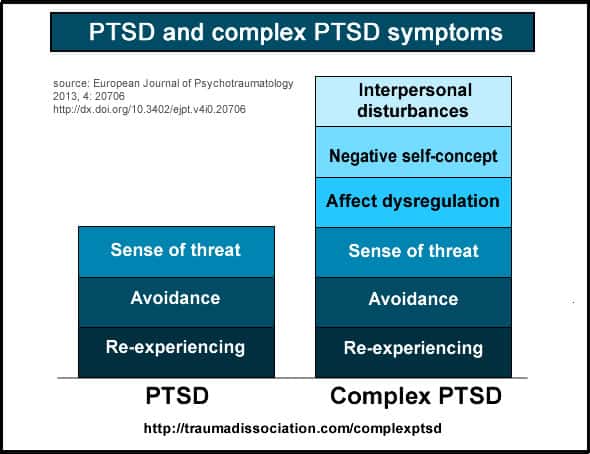
Medications
Although not the first line of treatment, your doctor may recommend certain types of medications to help you deal with the symptoms.
Antidepressants: These medications are generally used for anxiety and depression. These conditions often are experienced at the same time as PTSD. Two of these types of medication are approved by the FDA for PTSD treatment: the selective serotonin reuptake inhibitor (SSRI) medications sertraline (Zoloft) and paroxetine (Paxil).
Anti-anxiety medications: These are used for severe anxiety and related problems. However, they can be addictive and thus are usually only prescribed for a short time.
Generally, patients work with their doctor to determine the most effective medication with the least amount of side effects. Medications usually start having an effect within a few weeks.
Sometimes, patients need to try a few different types or combinations to find the one that works best for them.
You can find more information on the condition at the National Center for PTSD website.
If you liked this article, you should check out our other posts in the Nebula Research Library!
June 1, 2023
